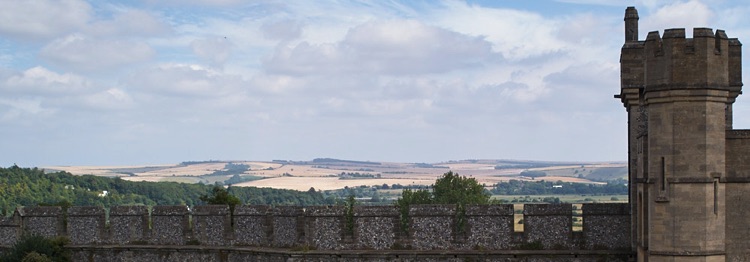0230
Year
The Saxon Shore Forts
Event
In the early third century, the Saxons, Jutes and Angles were beginning to encroach on the Roman empire. In an attempt to hold back these germanic raiders, the Romans built a series of coastal defenses around the south and east of Britain and the northern coast of Gaul. On the south coast of Britain, the western most of these forts was Porcester in Hampshire, moving east to Pevensey in Sussex and then Lympne in Kent. The chain of forts continued around the coast of Britain, as far north as Brancaster in Norfolk. In total, nine major forts were built and garrisoned. The full list of forts, with the Roman name in parenthesis, is given below:
Portchester, Hampshire (Portus Adurni)
Pevensey, East Sussex (Anderitum)
Lympne, Kent (Portus Lemanis)
Dover, Kent (Dubris)
Richborough, Kent (Rutupiae)
Reculver, Kent (Regulbium)
Bradwell-on-Sea, Essex (Othona)
Burgh Castle, Norfolk (Gariannonum)
Brancaster, Norfolk (Branodunum)
Work on the forts begun around the year 230. Recent dendrochronological dating of wooden foundation piles at Pevensey have dated construction of the fort to around the year 290. This was an especially interesting time in Britain, as the Roman general Carausius had seized the Roman fleet and had declared himself emperor of Britain and some of northern France. For the period 286 to 296 Britain was independent of the mainland Roman empire, posing the question: was Pevensey built at Carausius instigation, or was the fort built as a continuation of the fortifications started at an earlier date by the Roman empire proper?
The wall of the roman fort at Pevensey encloses an area of approximately 18 acres with gates on the West north and east of the castle. The southern side of the fort would have faced the sea. There is, unfortunately, little remaining evidence to show how the space inside the fort was used.
Pevensey was garrisoned by Numerus Abulcorum, a roman auxiliary unit from Spain. The size of the unit was between 200 and 400 men. It is interesting to note that the later Norman castle built inside the Roman fort was much smaller in size and was garrisoned by only 30 men.
The Saxon Shore forts also served to berth ships that scouted for and sometimes intercepted Saxon pirate ships. The sails and rigging of these ships was reportedly dyed green to match the sea, to help them evade detection.

Sussex Timeline


